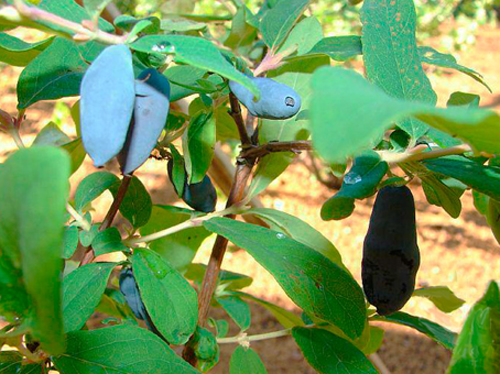Honeysuckle variety Swan
The end of the last century and the beginning of the current century turned out to be a real benefit for honeysuckle - a berry that has been known in Russia for several centuries as a wild, low-value plant, suitable only for decorating a garden. But having paid attention to it, breeders in a short time created many cultivars that are increasingly gaining the love of gardeners.
The main advantages of honeysuckle are exceptional resistance to low temperatures, unpretentiousness, the ability to bear fruit even in regions where other berry crops are powerless. And, of course, usefulness, early fruiting - they should not be forgotten either! Let's take a closer look at one of the popular varieties of honeysuckle.

Briefly about biography
The swan was raised by specialists from St.Petersburg, or rather, from the Federal Research Center of the All-Russian Institute of Plant Genetic Resources named after V.I. N.I. Vavilov. The variety continues the well-known line of the so-called Kamchatka honeysuckles, based on the Pavlovsky variety and the seedlings of the prototype No. 21−1. A new variety was registered in 1999, since then it has been tested in various regions of the country.
What is the difference between our heroine and many other "honeysuckle sisters", what are her features?
Description of the variety
The bush looks medium-sized, moderately spreading, loose. In the first 2-3 years, it generally grows slowly, then accelerates, occasionally reaching two meters (but usually a little lower). The crown is round, with straight, strong branches, the brownish bark of which in youth has a noticeable green tint. Over time, its color changes, becoming brownish-brown. The bark of old shoots often flakes off.
The leaves are distinguished by a rich green color and a slightly convex shape, as well as a pointed end and base. Many small flowers usually appear by the beginning of May, they are able to easily withstand small return frosts.
Fruit ripening period is average, in most regions it is mid or late June. Berries with an average weight of 1.2 to 1.6 g, with an elongated, barrel-shaped shape characteristic of honeysuckle. Their varietal feature is a pointed base, as well as a difficult separation from the stalk. On the one hand, this can be considered a disadvantage, because harvesting becomes more difficult, but on the other hand, it is a clear advantage: the fruits can hang on the branches for a long time without crumbling (which is a common problem for many honeysuckles).
The peel is slightly bumpy, of medium thickness, it allows transporting the fruits, and also ensures their relative keeping quality. The pulp is tasty, aromatic, although acidity prevails over sugar content. However, here this property can be considered as positive - Swan berries are famous for their high content of ascorbic acid.
Features of agricultural technology, use on the farm
In part, we have already touched on these issues when describing the properties of the fruit. Let's bring them down to a general list and add new information.
- The variety is resistant to both frost and pests, with the exception of aphids. Unpretentious and undemanding to growing conditions.
- The yield is high, from 1.5 kg per bush.
- The berries do not crumble, they can, unlike many other varieties of honeysuckle, be transported over medium distances.
- The variety almost does not pollinate on its own; experts call Kamchadalka, Blue Spindle, Morena and Bluebird the best pollinators.
The culture is universal, the harvest is used in different ways. Most of the fruits are still consumed fresh, being almost the first tasty and healthy berry in the garden.At the same time, due to the possibility of storage and transportation, berries can be processed into preserves, jams, compotes. Many amateur gardeners make good homemade wine from them.
Fruits as well as leaves are used in folk medicine. Landscape designers recommend the Swan for decorating a garden plot: both beautiful and useful at the same time!








